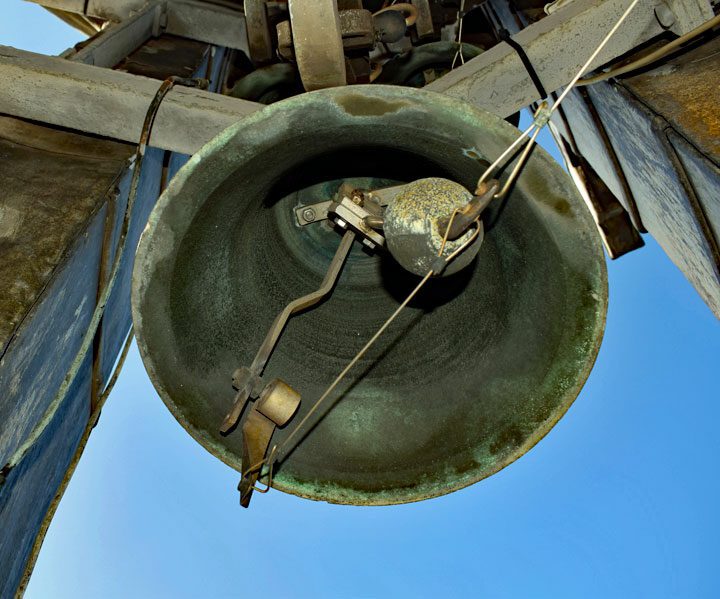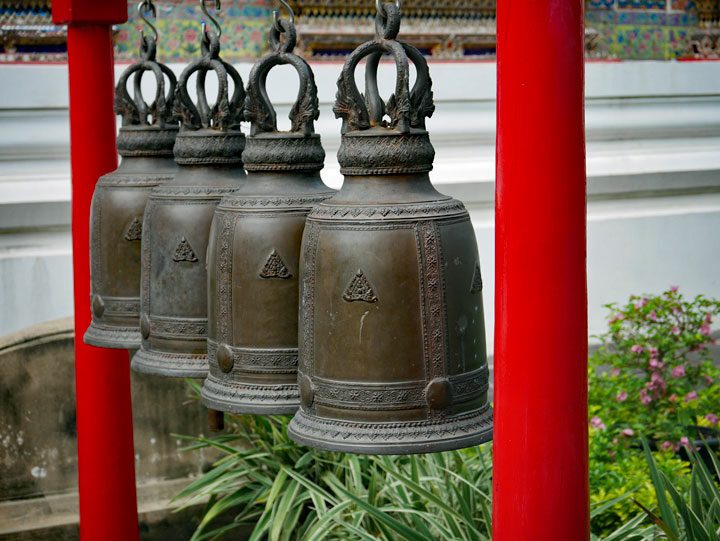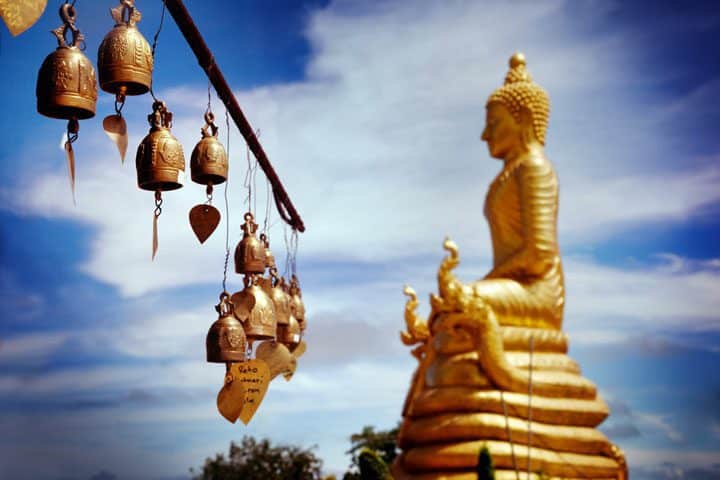Hear the bell ring and know where the clapper hangs
Traveling through Thailand you will undoubtedly also visit Buddhist temples. On the entrance route to a temple you will usually come across a number of bells where the clapper is missing. The bells can be rung by hitting them with a wooden stick, but often also by means of a round wooden beam that is suspended horizontally from two points. With a rope, the beam can be set in motion and the clock on the outside can be struck. A custom that is practiced at Buddhist temples and rarely at churches.
Where bells sounded in Europe to spread the word of God, temple bells did so for centuries in China to remind people of the way to the Buddha. The sound of the bell penetrated to the furthest hell and brought enlightenment and redemption to all worlds. The temple bells in Thailand also try to show you the right path to Buddha.
In Belgium and the Netherlands we have cherished the chimes, carillon or carillon for many years, but it must be said that the cradle of bells and whistles is in China. Finds such as a large bell without a clapper and smaller bells with loose hammers from the beginning of the Shang Dynasty (1530 -1030 BC) are irrefutable evidence.
By far the largest collection of musical instruments, culminating in no fewer than 65 bells, was found in 1976 in Central China, Hubei Province, in the tomb of Zeng Hou Yi (Marquis Yi of Zeng c. 433 BC)
South East Asia
At the beginning of our era, bell casting from China also spread to Northeast Thailand. Ritual bells without a clapper intended for temples, but also the important function that should not be forgotten: to drive away the evil spirits.
In the 11e century, the art of bells and bells also spread to the Khmer Empire, which at the time included Cambodia, Laos, Vietnam and part of what is now Thailand. Beautifully carved bells from that period are still witnesses of the former imposing Khmer Empire in Ankor Wat.
A remarkable bronze sculpture was found in 1966 in the northeast of Thailand in the vicinity of Ban Chiang, located in the province of Udon Thani. The numerous small bells date from the beginning of our era. These bells usually have an elliptical cross-section and, if ornamented at all, have simple line decorations. In all likelihood, these are so-called grave goods, a worldwide custom to accompany the deceased to the afterlife with the ringing of bells. Because here too the evil spirits had to be kept at a good distance. The archaeological site of Ban Chiang was discovered by American geologist Steve Young. Based on the large amount of pottery pots also found and the investigations that followed, it turned out that the archaeological finds date from the period 200 BC to 4420 BC.
Religious aspects
Special powers are often attributed to bells and bells and that phenomenon can still be observed today. In Western antiquity, bells and bells had the Greeks and Romans in the 12e century BC already a conjuring task. At that time, the horse was undergoing a change of function from chariot to mount. Bells were added to horse harness, not for decoration but to protect the horse from thunder and lightning. You can still see this today and even in sheep and cows. Have the holy suspicion that many owners have completely missed the meaning.
Bells attached to the clothing were and are sometimes still used at funerals to drive away the recurring evil spirits, something that is still in use in Thailand. There, however, the bubbles have been replaced by loud bangs, but with the same intention. And what about the wind chimes and small metal plates under awnings. In modern times people may think of decoration or the pleasant sound, but the real background was also the evil spirits there.
The religious differences between Asia and Europe regarding the use of bells and bells are less than we might think. The consecration of bells is a ritual that has been in use in Europe since the Middle Ages. After the prayer to drive out the evil spirits, the bells are washed with holy water, then anointed with oil and finally incense. There is much to tell about clocks and bells and we may do so sometime soon.





The clocks used to be a global indication of time for the villagers.
The heavy bell, the Thoêm, sounded from 18.00 p.m. to midnight.
The light clock, tie, applied for the second part of the night.
Both can be found in the timestamps.
Every farmer in Austria had his "own" cowbells for his cows.
Interesting. Hope for more stories about “”de Klok””.
What an interesting and instructive article, I am still learning in my old age, thank you Joseph